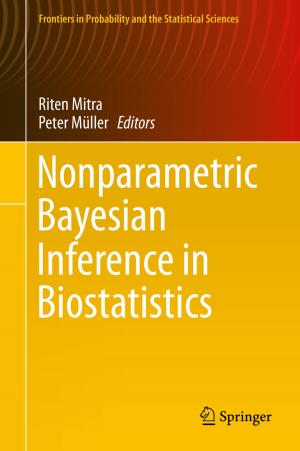Electrophysiology of Unconventional Channels and Pores
Nonfiction, Science & Nature, Science, Biological Sciences, Cytology, Biochemistry| Author: | ISBN: | 9783319201498 | |
| Publisher: | Springer International Publishing | Publication: | October 23, 2015 |
| Imprint: | Springer | Language: | English |
| Author: | |
| ISBN: | 9783319201498 |
| Publisher: | Springer International Publishing |
| Publication: | October 23, 2015 |
| Imprint: | Springer |
| Language: | English |
This book is dedicated to the channels and pores that belong to an eclectic and ubiquitous class of unconventional - perhaps at times strange - pore-forming molecules, which nevertheless play fundamental roles in various organisms. These non-canonical channels may take on various and sometimes complex architectures, such as large beta-barrels or lipid-containing pores. They may originate from bacteria, viruses or intracellular organelles. For some of them, the physiologically relevant substrate may indeed be ions, and for others folded polypeptides. Some are released by cells in a soluble form that has the ability to insert into biological membranes to exert its permeabilizing effect. Many of these unconventional pores have been investigated by electrophysiology, which, by its virtue of focusing on a few or even a single unit, has provided invaluable insight into the mechanisms and structure-function relationships of these remarkable membrane entities. The chapters of this book highlight a representative set of these interesting investigations.
This book is dedicated to the channels and pores that belong to an eclectic and ubiquitous class of unconventional - perhaps at times strange - pore-forming molecules, which nevertheless play fundamental roles in various organisms. These non-canonical channels may take on various and sometimes complex architectures, such as large beta-barrels or lipid-containing pores. They may originate from bacteria, viruses or intracellular organelles. For some of them, the physiologically relevant substrate may indeed be ions, and for others folded polypeptides. Some are released by cells in a soluble form that has the ability to insert into biological membranes to exert its permeabilizing effect. Many of these unconventional pores have been investigated by electrophysiology, which, by its virtue of focusing on a few or even a single unit, has provided invaluable insight into the mechanisms and structure-function relationships of these remarkable membrane entities. The chapters of this book highlight a representative set of these interesting investigations.















